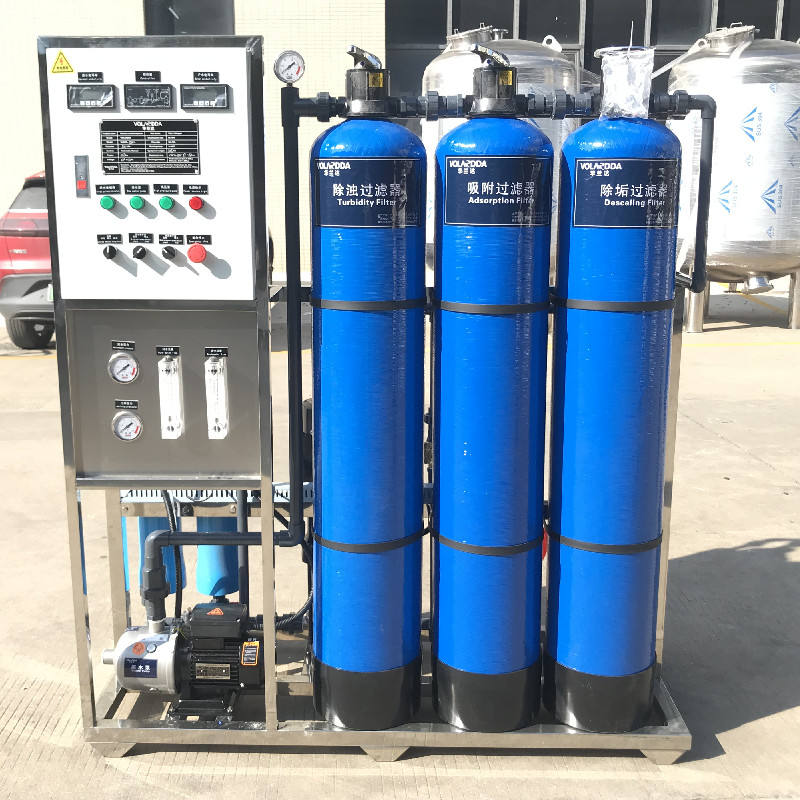Introduction of cleaning method after reverse osmosis membrane contamination
After a period of operation of the reverse osmosis equipment, the reverse osmosis membrane element will be contaminated by suspended solids or insoluble substances in the water. The most common of these pollutants are calcium carbonate scale, calcium sulfate scale, metal oxide scale and silicon sediment. The nature and pollution rate of pollutants are related to the water supply conditions. If no early measures are taken, the pollution will damage the performance of the RO membrane components and reduce the use time of the RO membrane in a relatively short time. This article Xiaobian is about the cleaning method of reverse osmosis membrane pollution.

First, remove reverse osmosis membrane pollutants:
Removal of contaminants from reverse osmosis membranes can be achieved by chemical cleaning and physical rinsing, sometimes by changing operating conditions. As a general rule, reverse osmosis membrane cleaning should be performed when one of the following conditions occurs.
1. At atmospheric pressure, the water flow of produced water drops to 10 to 15 percent of normal value.
2. In order to maintain the water flow of the product, increase the temperature adjusted feed water pressure by 10 to 15%.
3. The water quality of reverse osmosis water is reduced by 10 to 15℃, and the salt permeability is increased by 10 to 15℃.
4. Increase usage pressure by 10 to 15 percent.
5. The pressure difference of RO film increases significantly in different time periods.
Two, common pollutants of reverse osmosis membrane and their removal methods:
1. Calcium carbonate scale
When the scale inhibitor adding system fails or an acid system occurs, the pH of the influent increases and calcium carbonate can then be deposited. Calcium carbonate deposits should be detected as early as possible to prevent crystal growth on the surface of the reverse osmosis membrane. Causing damage and early detection of calcium carbonate scale. This can be removed by running the feed water at a pH between 3.0 and 5.0 for 1 to 2 hours. For calcium carbonate scale with long precipitation time, citric acid cleaning solution should be used for cyclic cleaning or overnight soaking.
Make sure that the pH of any cleaning solution is not lower than 2.0, otherwise damage to the RO membrane elements may occur, especially at higher temperatures. Maximum pH should not be higher than 11.0. Use ammonia to increase pH and use sulfuric or hydrochloric acid to lower pH.
2. Calcium sulfate scale
Cleaning solution is the best method to remove calcium sulfate scale from the surface of reverse osmosis membrane.
3. Metal oxide scale
The deposited hydroxide can be removed using the method described above for calcium carbonate scale removal.
4. Silicon scale
For silicon scales that do not live in symbiosis with metallized or organic materials, they can only be removed by special cleaning methods. The details are to contact Hyde Energy.
5.Organic sediments
Organic deposits (such as microbial mucus or mold) can be removed with a cleaning solution. To prevent retransmission, a professional sterilization solution should be used to circulate and soak in the system. Usually, soaking it takes a long time, such as in reverse osmosis equipment. After three days of use, it must be disinfected.
The above is the introduction of cleaning methods after reverse osmosis pollution. Regular inspection of the overall performance of the system is a good way to confirm the pollution of membrane components. Different pollutants will cause different degrees of damage to the performance of membrane components, so we need to clean them regularly.

